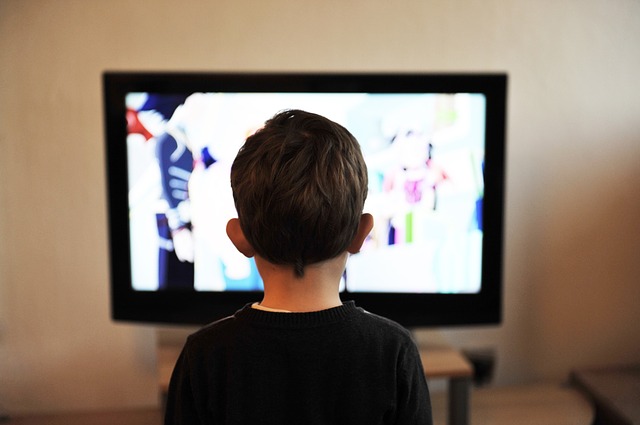
The way we consume TV is changing. People have their favorite content – that hasn’t changed – but the way they watch content is totally different than it was 10, even five, years ago. Recently, there’s been a huge shift toward over the top (OTT) video services. Even if you’re not familiar with the name, you’re familiar with the service.
OTT providers bypass traditional video distribution and distribute content through the internet.
- Some more well-known OTT providers are: Hulu, Sony’s Playstation Vue, YouTube TV, Sling, Crackle, and Amazon Prime.
People access these providers through connected TVs. A connected TV (CTV), is a TV set that’s connected to the internet by having built-in capabilities (smart TV), or another device like a game console (PS4), set-top box (Roku TV), or streaming stick (Amazon FireTV).
These services are changing the way people access their favorite TV content. OTT gives viewers control of when, where, and how they watch their favorite content. 73% of consumers use CTV daily, and 32% of the population streams on a day-to-day basis.
Clearly, there’s a trend. It seems like every day more and more viewers are using some form of OTT service.
But by no means should you ditch cable and switch exclusively to OTT. Traditional TV is still very important and effective. OTT offers tremendous opportunity as a new way to effectively reach your audience.
1. OTT is the Future of TV
According to eMarketer, cord-cutters are expected to grow to 40.1 million by 2021; while cord-nevers (people who have never subscribed to cable or satellite) will hit around 41 million. In fact, the only pay TV demographic expected to rise are viewers age 55 and up – every other demographic will decline.
Expectations are changing. These days, people want TV when they want it. No longer are viewers clearing their schedules so they can watch their favorite show at 8pm (Game of Thrones being the exception). Nearly half of adults 22 to 45 years old are no longer watching content on traditional TV.
When they do find the time, CTV users spend about 6 more hours watching their shows than non-CTV users. With OTT time for internet users expected to increase by 425% from 2014 to 2019.
People really like OTT channel selection features too.
OTT doesn’t offer the same amount of channel options like cable does, but they still offer major networks like TNT, AMC, and ESPN, and let their subscribers customize their channel line-up. That way viewers still get their favorite channels. So, the same viewers who watched ESPN on cable are still watching ESPN – just through OTT.

2. OTT Viewers Are More Engaged with Ads
As an industry professional you might not like to hear this, but consumers don’t like TV ads. Viewers find them annoying, disruptive, and far too cluttered.
But there is good news. People don’t feel the same way about digital ads. They actually prefer them. 50% of people found digital ads to be less disruptive and more memorable.
Which shouldn’t be surprising, considering digital ads can be tailored to the induvial watching them. Messages are customized to fit viewer personas, which means more people are engaged with the ads. This explains why people multi-task 9% less with digital than traditional TV.
CTVs offer targeting options that go way beyond the capabilities of traditional TV. You can target by DMA, behavior, lifestyle, device type, and even IP address. Plus, ads shown through OTT providers aren’t skippable, which helps contribute to the 97% completion rate.
There’s been a 43% year-over-year growth in ad views and a 50% year-over-year growth in authenticated ad views.
But it gets better…
3. Your Audience is Already There
Young, educated, and high income – three demographics almost every brand targets.
It just so happens these are the same people who are using CTVs.
Look at these stats:
- CTV Users:
- Average age: 40
- HHI ($75K+): 49%
- Employed (FT or PT): 70%
- Education (some college+): 81%
- Non-CTV Users:
- Average age: 56
- HHI ($75K+): 35%
- Employed (FT or PT): 52%
- Education (some college+): 72%
- And the cord-cutter and cord-nevers are even younger, although less affluent:
- Average age: 38
- HHI ($75K+): 42%
- Employed (FT or PT): 70%
Already, 190 million people have some form of CTV, and that number is only expected to increase.

4. You Don’t Have to Compromise
Customers of these OTT platforms can get all the same channels as they would on cable. Everything from live sports, to news, current shows, and current movies. The only difference is – depending on their OTT provider – viewers have more control over the channels they get. Instead of paying for 200 channels and only watching 30 of them, viewers can just choose to pay for their 30 channels.
Your audience doesn’t change. They’re still watching the same content they’ve been watching, just without a cord. Only now, you’re able to customize your offers like never before.
Going back to the improved targeting OTT provides: Let’s say your client sells outdoor equipment. You’ve always gone after men 35-44 and had ad space on HGTV. Well, you can still have that same HGTV space through OTT, but now you can give viewer-specific information. You can tell him where the closest dealer is, what their hours are, or what specials or sales the dealer may be offering…saving the viewer time and effort.
Get Ahead
OTT and CTVs are the future of TV. People still love content; the only thing changing is how they view it. Traditional TV and cable remains important though. Despite all the people shifting away from it, there’s still loads of people who subscribe to some form of cable service. Cable has been, and still is, a very effective medium.
As more and more people are moving away from traditional TV and on to some form of OTT service, you need to keep your options open.
But just because people are losing the cord doesn’t mean you’re losing your audience. OTT advertising gives you the best of both worlds. You get the customization and targeting options of digital, and the visual element and reach of TV.
Find out if your media schedule would benefit by including OTT.
Give us a call at 330.929.7700 – we’re happy to help with any questions you may have.



